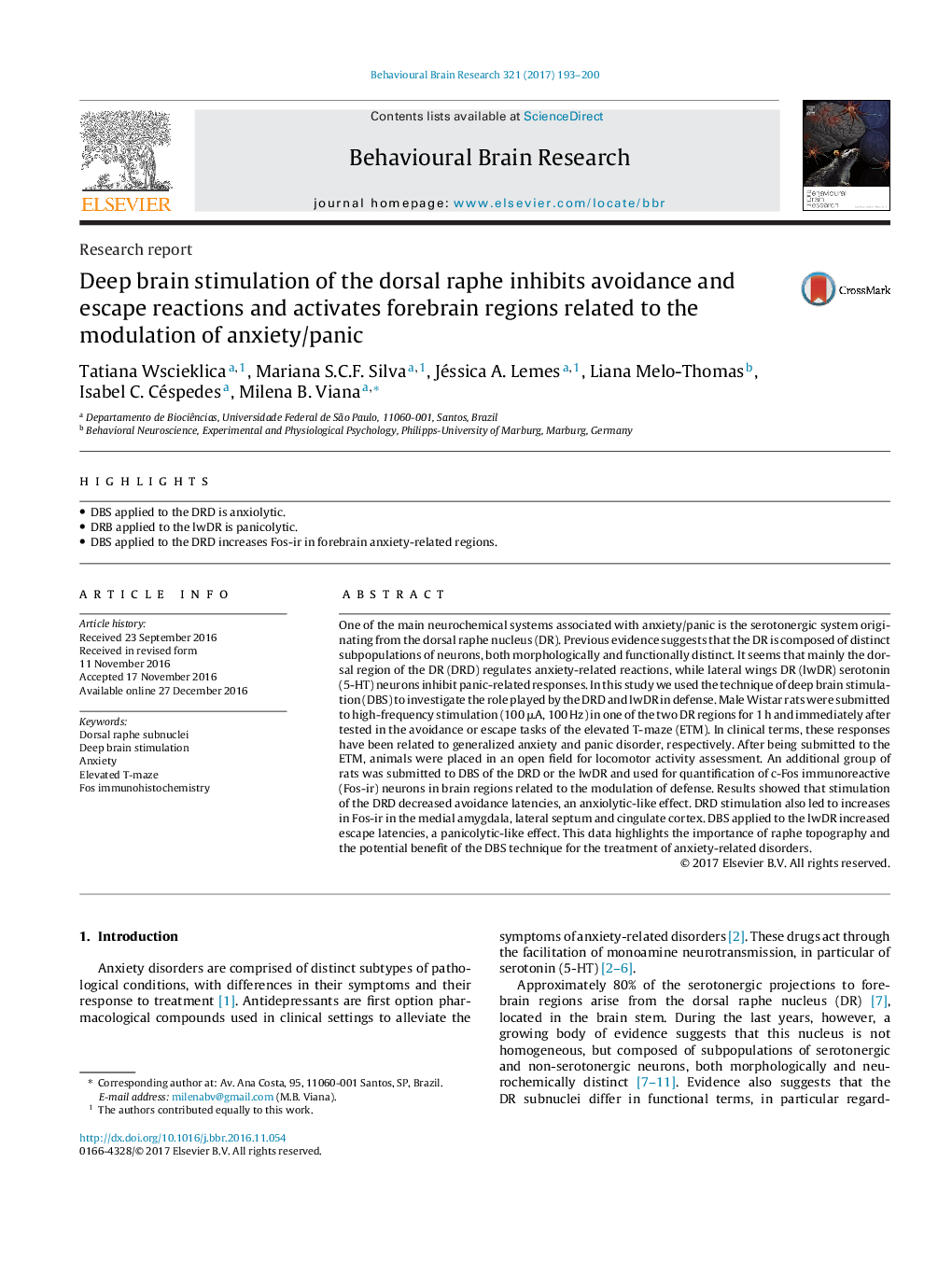| کد مقاله | کد نشریه | سال انتشار | مقاله انگلیسی | نسخه تمام متن |
|---|---|---|---|---|
| 5735607 | 1612912 | 2017 | 8 صفحه PDF | دانلود رایگان |
- DBS applied to the DRD is anxiolytic.
- DRB applied to the lwDR is panicolytic.
- DBS applied to the DRD increases Fos-ir in forebrain anxiety-related regions.
One of the main neurochemical systems associated with anxiety/panic is the serotonergic system originating from the dorsal raphe nucleus (DR). Previous evidence suggests that the DR is composed of distinct subpopulations of neurons, both morphologically and functionally distinct. It seems that mainly the dorsal region of the DR (DRD) regulates anxiety-related reactions, while lateral wings DR (lwDR) serotonin (5-HT) neurons inhibit panic-related responses. In this study we used the technique of deep brain stimulation (DBS) to investigate the role played by the DRD and lwDR in defense. Male Wistar rats were submitted to high-frequency stimulation (100 μA, 100 Hz) in one of the two DR regions for 1 h and immediately after tested in the avoidance or escape tasks of the elevated T-maze (ETM). In clinical terms, these responses have been related to generalized anxiety and panic disorder, respectively. After being submitted to the ETM, animals were placed in an open field for locomotor activity assessment. An additional group of rats was submitted to DBS of the DRD or the lwDR and used for quantification of c-Fos immunoreactive (Fos-ir) neurons in brain regions related to the modulation of defense. Results showed that stimulation of the DRD decreased avoidance latencies, an anxiolytic-like effect. DRD stimulation also led to increases in Fos-ir in the medial amygdala, lateral septum and cingulate cortex. DBS applied to the lwDR increased escape latencies, a panicolytic-like effect. This data highlights the importance of raphe topography and the potential benefit of the DBS technique for the treatment of anxiety-related disorders.
Journal: Behavioural Brain Research - Volume 321, 15 March 2017, Pages 193-200
